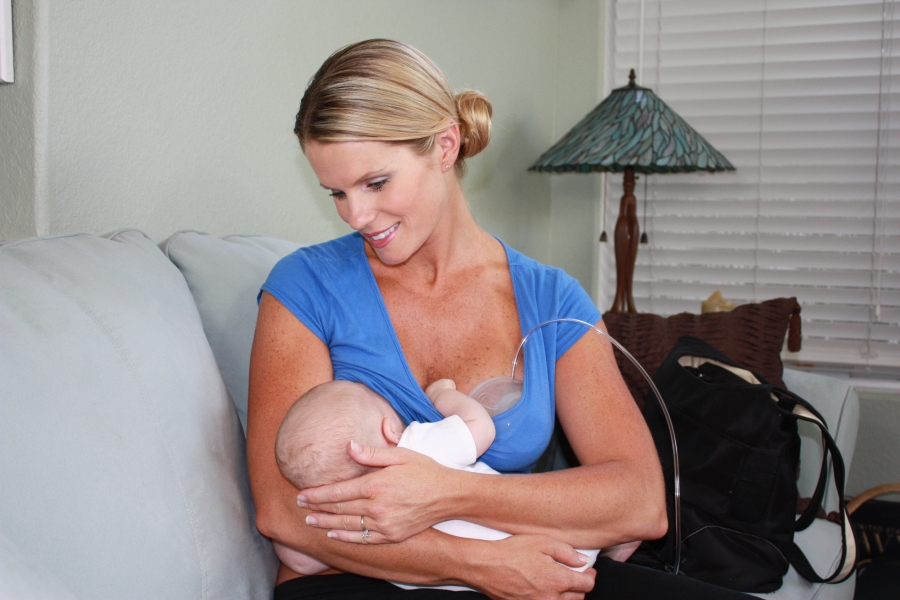Freeze baby food in glass jars
8 Creative Ways to Store Baby Food
You don’t need a giant freezer to store all that baby food you’ve been busy whipping up. You just need the right containers. Experiment with these easy freeze methods to see which works best for you.
1
Image: NUK
Ice Cube Trays
Why we love it: Store at least a dozen servings of baby food ahead of time – and you won’t have to worry about breaking out the blender every night! Trays are made to easily stack in the freezer, so they won’t take up much room. And this one by NUK comes complete with a lid.
How to store it: Rinse and sanitize the ice tray before using. Fill each ice cube cubby with pureed baby food, until you’ve used every available space. Cover with plastic wrap (or a lid, if you have one) and freeze.
2
Image: Shutterstock
Cookie Sheet Splats
Why we love it: You don’t have to spend a dime! Just cover a cookie sheet in parchment paper and you’re ready to go.
How to store it: Prepare baby’s food and drop it by the spoonful on a cookie sheet covered with parchment paper. Pop in the freezer until completely frozen. Then, store them in plastic bags or Tupperware.
3
Image: Wholesome Baby Food
Bulk Freezer Bag Storage
Why we love it: It’s easy. Plus, you won’t waste time racking your brain trying to remember what those green cubes are (avocado? spinach? broccoli?) or if they’re still safe for baby to eat.
How to store it: Prep baby’s meals in ice cube trays or in spoonfuls and once they’re frozen through, pop them in freezer bags labeled by food and date.
4
Image: Kitchen Craft
Silicone Muffin Cups
Why we love it: Because they’re flexible, it’s really easy to pop out single servings of baby’s food, and you can reuse them again and again. Try this colorful set of 12 by Kitchen Craft.
How to store it: Make baby’s purees and place them in these individual wrappers to freeze. Store them right in their cups or pop them out and place them in freezer-safe Tupperware.
Store them right in their cups or pop them out and place them in freezer-safe Tupperware.
5
Image: Nuby
Ice Tray Pops
Why we love it: Making baby’s food just got a whole lot cooler now that you can store them in all sorts of shapes, sizes and designs!
How to store it: Make baby’s purees and when the time comes to freeze them, use these ice pop trays instead. They’re BPA free (score for baby!) and dishwasher safe (score for you!). Plus, when baby’s old enough, you can use them to make popsicles.
6
Image: Shutterstock
Freezer-Safe Jars
Why we love it: It’s a totally retro idea with a modern twist—and they’re reusable and recyclable.
How to store it: Make sure you’re buying freezer-safe canning jars (we recommend Ball’s Jelly Canning Jars). Otherwise, they’ll crack. After you prep baby’s food and put it in the jars, seal them tightly and store them in the freezer for up to three months.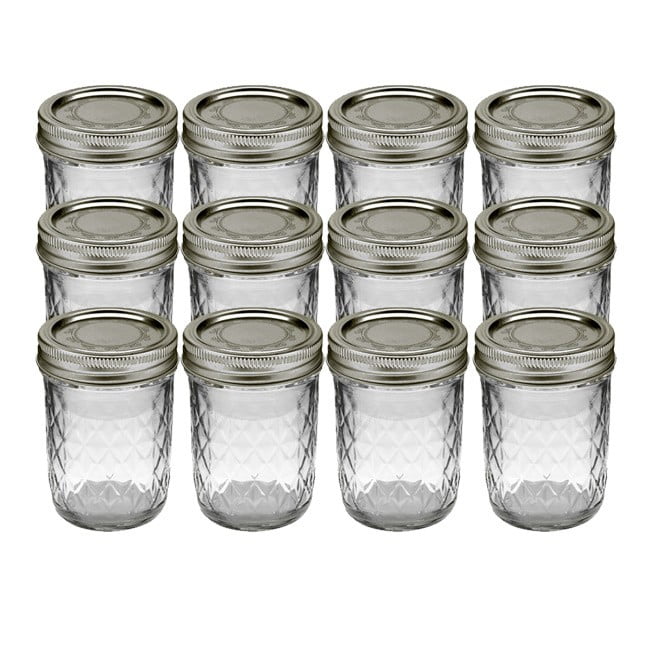 When you’re ready to use the food, thaw under warm water.
When you’re ready to use the food, thaw under warm water.
7
Image: OXO/Target
Freezer-Safe Baby Tupperware
Why we love it: Baby-sized Tupperware is worth investing in — you’ll use it for baby food now and for toddler snacks later. Most are BPA-free (and won’t contaminate baby’s food). This set by OXO Tot is air-tight and liquid-tight—nothing in, nothing out!
How to store it: After mashing those avocadoes, freeze them right in these colorful storage containers.
8
Image: Target
Mini-Muffin Trays
Why we love it: When you’re not busy baking batch after batch of mini-muffins, these trays double as the perfect portion size for baby’s mini meals.
How to store it: Store mashed veggies or fruits in stackable trays. After you’ve filled all the available space, cover tightly with a lid or plastic wrap to prevent your purees from getting freezer burn.
Please note: The Bump and the materials and information it contains are not intended to, and do not constitute, medical or other health advice or diagnosis and should not be used as such. You should always consult with a qualified physician or health professional about your specific circumstances.
You should always consult with a qualified physician or health professional about your specific circumstances.
save article
Your Child’s Age
Select your child's age in months to begin tracking their development.
Join
Already a member? Log In
Sign up for weekly updates to help you on the road to parenthood!
Choose Your Journey
Want a personalized experience?
Download The Bump App for daily pregnancy and newborn updates with our free app
Next on Your Reading List
Article saved.Go to My Saved Articles
Article removed.
Name added. View Your List
How to Make and Freeze Baby Food in Jars
Share This
F T P E
February 11, 2014 Preserving Recipes, Recipes
Making your own baby food is great way to ensure your baby is eating the freshest locally grown fruits and vegetables. It is quite simple to do and before you know it you’ll have a freezer stocked with your local bounty.
It is quite simple to do and before you know it you’ll have a freezer stocked with your local bounty.
Once your pediatrician has suggested it’s time to introduce solid foods, which is usually around 6 months of age, you’ll want to determine which foods to start with. Common first foods are carrots, apples and sweet potatoes. Here’s a list of suggested first foods. After your baby has been eating solid foods for a few months you may want to try introducing some other foods such as, broccoli, avocados and cauliflower.
Three basic ways to prepare baby food:
Steam:
Certain produce tends to respond better to steaming, such as apples, pears broccoli, and plums. Put an inch or so of water in a pot, add in the produce, cover and steam until soft.
Roast:
Utilizing your oven to roast is a good method for cooking carrots, sweet potatoes, winter squash and beets. Chop food into small/medium pieces, or roast whole in an oven at 325 degrees.
Raw:
Foods like bananas & avocados are perfect in their raw state.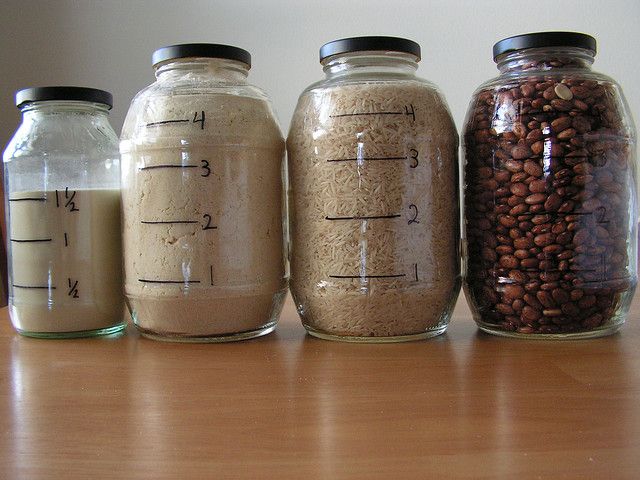 Once ripe, just mash with a potato masher. For a smoother consistency you can puree with a blender or an immersion blender.
Once ripe, just mash with a potato masher. For a smoother consistency you can puree with a blender or an immersion blender.
Here’s how to make a basic carrot puree for your baby
- Rinse carrots in water.
- There’s no need to peel carrots, especially if you are using organic carrots. The vast majority of the nutrients in carrots are contained in the peel! Find out more about whether or not to peel produce for your baby here.
- Heat the oven to 325 degrees.
- Slice the carrots into strips.
- Place the carrots in foil and wrap them up, creating a foil pocket for the carrots to cook in.
- Place your foil pockets on a cookie sheet and place in the oven.
- Cook until the carrots are soft. (45-50 minutes)
- Place the cooked carrots into a large bowl and use a immersion blender to puree, add water as needed. If you don’t have an immersion blender, you could use a food processor or blender.
- Once the puree is smooth spoon into 4 ounce jars, top with lids and freeze.

- Here’s more recipes for carrot baby food.
Here’s how to make a basic broccoli puree for your baby
- Rinse broccoli in water.
- Cut broccoli florets into similar sizes.
- Fill a medium pot with about an inch of water.
- Add broccoli to pot and cover.
- Simmer broccoli until soft and bright green. (5 minutes)
- Add broccoli to a large bowl, reserving the cooking liquid.
- Use an immersion blender to puree, add cooking liquid as needed.
- Once puree is smooth spoon into 4 ounce jars, top with lids and freeze.
- Here’s more recipes for broccoli baby food.
Tips:
- Do not overfill jars when freezing. Allow enough headspace for the expansion of your product. Read our post about how to freeze in jars for more important tips.
- Do NOT try to microwave a frozen jar. Thaw jars in the fridge or on the counter, if you are able to monitor them.
- Use jars that are appropriate for freezing food.
 Jars that do not have shoulders are the easiest because the contents can expand upward in the jar during freezing.
Jars that do not have shoulders are the easiest because the contents can expand upward in the jar during freezing. - We recommend the 4 ounce Regular Mouth Tapered Jars, or Ball’s 4 ounce Quilted Crystal. However, you could also use our 2 or 4 ounce Straight-Sided Jars. We’ve pictured both the Tapered and Straight-Sided jar styles below.
- If you’ve been blessed with multiples and wish to freeze in larger volumes to split after thawing, the 8 ounce Widemouth Jars would work well and they’d stack nicely in the freezer.
Pictured from left to right – 4oz Regular Mouth Tapered Jars 70G CT, 4oz Straight-Sided 58CT
Want to learn more about making your own baby food? Here’s a great resource for baby food recipes.
Freezing Homemade Baby Food - Encyclopedia Baby Food
Levchuk Viktoria©
There are some important guidelines for freezing baby food to follow, they are outlined on this page, and there is even a diagram of the foods that can be frozen. We will show you how to freeze freshly made puree and store it. It will be interesting to read.
We will show you how to freeze freshly made puree and store it. It will be interesting to read.
Good to know!
- The remains of frozen baby food - what to do with them, we will find out in the article.
- Heading Frozen food - all about baby food cubes.
- New thinking on allergens
Easy to use site map Baby Food Encyclopedia with a list of all articles and recipes.
How long do you keep baby food in the refrigerator or freezer?
Contents:
- Freezer: 4-6 months (ideally used within 1 month or 3 months)
- Refrigerator (fruits/vegetables): 24 hours
- Refrigerator (meat, poultry, fish eggs): 24 hours
For optimal quality and nutrient retention, store frozen baby food cubes in the freezer for no more than 1-3 months .
Frozen baby food is safe to use if kept in the freezer for about 3-6 months without thawing again. However, it is more reasonable to use them in the region of 1 month to 3 months inclusive. Due to the amount of water crystals that accumulate in baby puree, and the fact that nutrients and important substances can be leached/evaporated when thawed due to these same water crystals, it is wiser to use your frozen baby food whenever possible. - no more than 3 months of storage. However, it is best to use within the first month after freezing, we advise.
However, it is more reasonable to use them in the region of 1 month to 3 months inclusive. Due to the amount of water crystals that accumulate in baby puree, and the fact that nutrients and important substances can be leached/evaporated when thawed due to these same water crystals, it is wiser to use your frozen baby food whenever possible. - no more than 3 months of storage. However, it is best to use within the first month after freezing, we advise.
Most sources advise storing fruit and vegetables for 8 to 12 months in the freezer. This is mostly true of whole foods that are congealed in their natural state. This is also provided that the refrigerator compartment remains at a constant temperature below zero. Deep-freezing is best if you want to keep frozen food for a long time. However, it should be remembered that the instructions and recommendations for freezing food for long-term storage do not imply that the fruit or vegetable has been boiled and mashed.
How long can baby puree be kept in the refrigerator?
In the refrigerator, it is not recommended to store fresh pureed homemade baby food for more than 24 hours.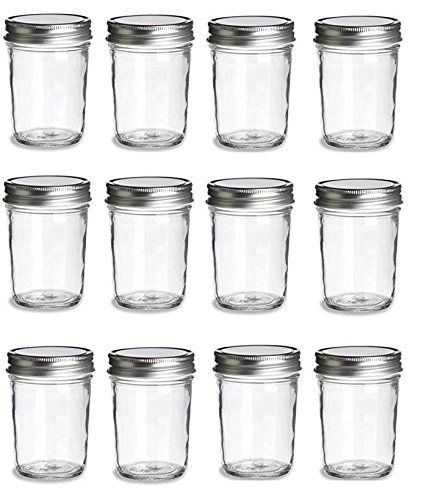 This limitation ensures that the growth of pathogens in the puree is kept to a minimum and that the food does not take on the “refrigerator flavor”. This "rule" applies to vegetables, fruits, meats, etc.
This limitation ensures that the growth of pathogens in the puree is kept to a minimum and that the food does not take on the “refrigerator flavor”. This "rule" applies to vegetables, fruits, meats, etc.
If you do not plan to freeze homemade baby food, then baby food for the baby is prepared every day if he is too small until 8-9months, or every other day, older than the specified age.
Why freeze baby food?
Save parent time, reduce food waste and ensure food safety.
For example, one potato was baked in the oven, and then half was mashed and the other half was frozen.
Frozen vegetables or fruits are safe in baby food
Fruits and vegetables can be frozen. Using frozen fruits and vegetables is the second best option after eating fresh. The quick freezing process (food is frozen at a very low temperature and very quickly) actually preserves the nutrients optimally. Cooking destroys more important nutrients than freezing food.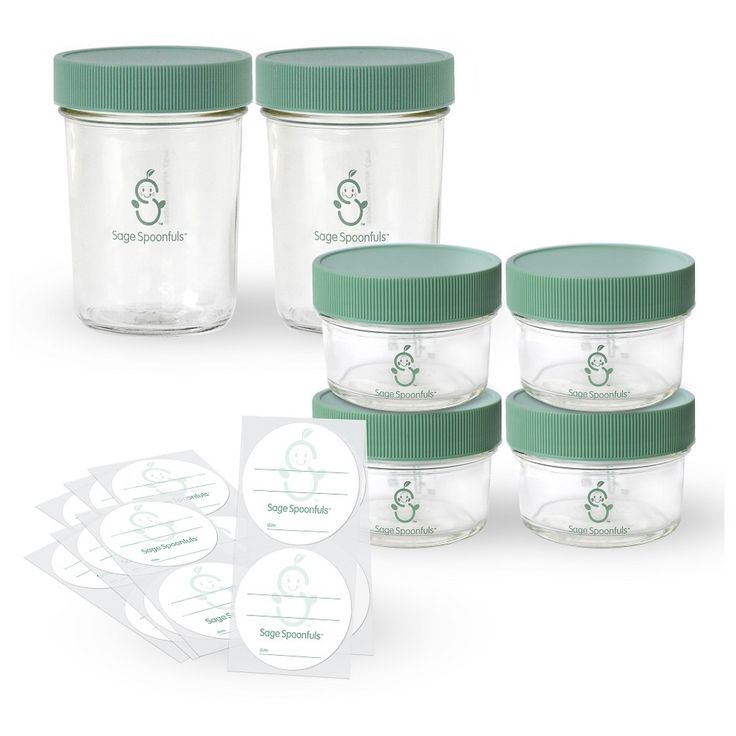 Contrary to myth, freezing food (particularly fruits and vegetables) does not destroy 100% of minerals and vitamins. The freezing process, subject to storage conditions at a constant temperature of zero degrees, does not contribute to the complete loss of nutrients and important substances - if this is the case, then most of the population is malnourished, since in winter we eat a huge amount of frozen foods.
Contrary to myth, freezing food (particularly fruits and vegetables) does not destroy 100% of minerals and vitamins. The freezing process, subject to storage conditions at a constant temperature of zero degrees, does not contribute to the complete loss of nutrients and important substances - if this is the case, then most of the population is malnourished, since in winter we eat a huge amount of frozen foods.
Frozen vegetables not cooked at the time of packaging must be cooked before eating. Please remember to read the labels of frozen bags, as some brands of frozen vegetables may be pre-cooked.
One of the most frequently asked questions is "Can I use frozen fruits or vegetables for baby food and then freeze the puree?". Since there are no studies that show that repeated freezing is negative and / or can negatively affect health. The problem is that it is necessary to cook food from products that have been frozen once. But the reality is that a frozen product, going through all the stages from a fresh look to a frozen product in a refrigerator in a store, can survive several defrosting and freezing, as it was written earlier, it is through water crystals that nutrients leave.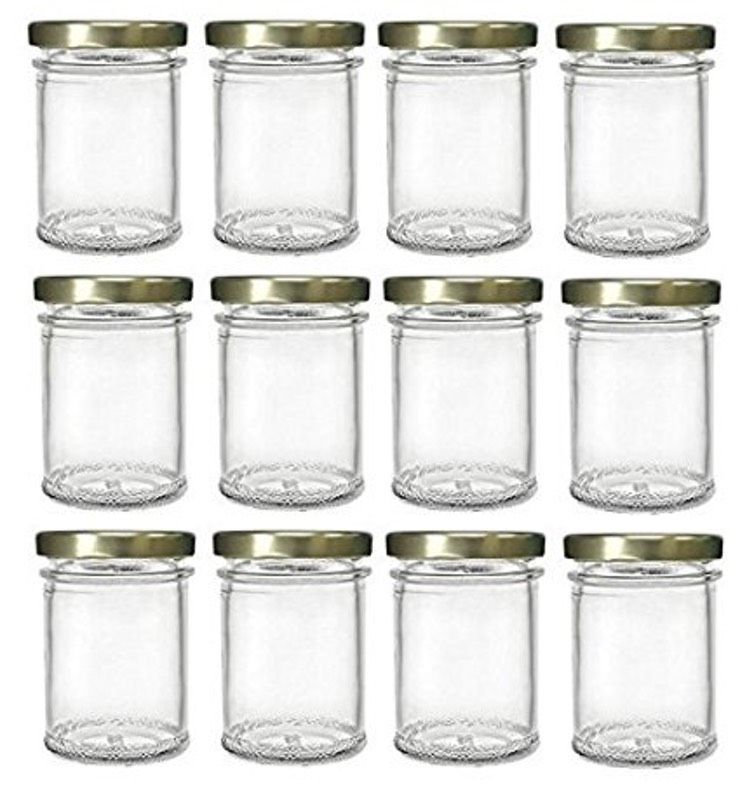 Therefore, purchased frozen vegetables and fruits must be carefully selected, and we would not recommend preparing baby food from them for subsequent freezing of baby puree. It is clear that sometimes parents have no choice and have to start complementary foods with purchased frozen food, so we carefully choose the packaging and the manufacturer, without holes, without pieces of ice.
Therefore, purchased frozen vegetables and fruits must be carefully selected, and we would not recommend preparing baby food from them for subsequent freezing of baby puree. It is clear that sometimes parents have no choice and have to start complementary foods with purchased frozen food, so we carefully choose the packaging and the manufacturer, without holes, without pieces of ice.
For example, from frozen vegetables (home-made or a good quality store-bought bag) that were raw when frozen, we cook a roast, we freeze the leftovers of the roast and use it for its intended purpose next time, but it is not worth freezing the roast after the last defrosting.
Why not refreeze
Do not refreeze thawed food, this is a correct statement. Re-freezing a defrosted product can affect the quality and taste (and possibly nutritional value) of the product, and when it is thawed, pathogenic bacteria may begin to multiply. It is always necessary to prepare defrosted food before re-freezing. The preparation of a thawed product then allows it to be re-frozen in a single cycle. Storing a bag of frozen fruits or vegetables makes food preparation a quick and easy solution. You do not need to defrost the whole package, just get the required amount of the product, and leave the rest in the freezer.
The preparation of a thawed product then allows it to be re-frozen in a single cycle. Storing a bag of frozen fruits or vegetables makes food preparation a quick and easy solution. You do not need to defrost the whole package, just get the required amount of the product, and leave the rest in the freezer.
The easiest way to freeze baby puree is to spoon it into an ice mold, cover with plastic wrap so that there is no air access.
Before using the ice molds, they must be thoroughly cleaned with soap and boiled water. Some parents even immerse their ice molds in boiling water for sanitization (Note: Make sure the sanitization is suitable for the molds before use.)
There are many benefits to storing your child's homemade food in an ice mold:
- Each cube is approximately the same size, which allows parents to determine the amount of food the child consumes.
- Minimal waste by using only 1 cube at a time and not having to waste a lot of food.
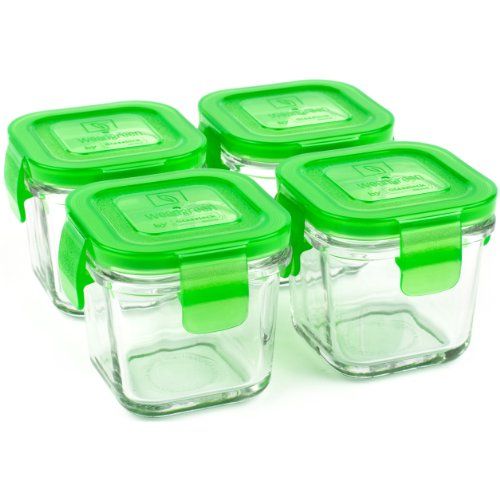
- Another advantage is that the ice molds are close at hand and you don't have to go out and buy them.
- The time spent in the kitchen is significantly reduced.
You can transfer baby puree cubes to freezer bags, freeing up molds for the next batch of food and also freeing up some freezer space.
Do not forget about the labeling of packages with cubes of baby puree, write the date of freezing and the type of puree. This will help you quickly remove the cube from the package, as well as monitor their expiration date.
Ice crystals on baby food cubes
Don't worry if ice crystals are visible on baby food cubes. It's not frostbite, but excess liquid used in mashing that rises and solidifies at the top of the cubes. These crystals or frost are not dangerous and will not make baby puree cubes inedible or harmful.
Frostbite - what is it and how to determine it?
Frostbite looks like greyish brown spots on frozen food. It looks like a leathery type of texture and is easily noticeable. Crystals on frozen foods are not frostbite, but are the result of excess liquid during the freezing process and the formation of ice crystals.
It looks like a leathery type of texture and is easily noticeable. Crystals on frozen foods are not frostbite, but are the result of excess liquid during the freezing process and the formation of ice crystals.
Frostbite does not make frozen foods bad or harmful; it just makes the affected areas very dry. The only thing that can suffer in food that is frostbitten is the quality. You can cut off frostbitten areas and use the undamaged area of food. Frostbite is the result of excess air in a frozen bag that sinks onto food. Eliminate air pockets in bags to help stop frostbite.
Can glass baby food freezer jars or baby food jars like Frutonyanya or Gerber be used? and also such banks are prone to rupture. Baby food jars are not manufactured for freezing or extreme heating. There are glass jars for freezing food in them, but they can be hard to find. Many people freeze in baby food jars, but I'm not a fan of this at all. After all, food is made for the baby because we want to give him the best healthy food; Do you really want to take the risk and freeze baby food in glass jars?
There are certain plastic jars that are specially made to withstand high temperatures and/or freezing. Therefore, it is best to use plastic containers or ordinary thick plastic bags, convenient and simple. There are also special freezer bags with a zip clip - an interesting option.
Therefore, it is best to use plastic containers or ordinary thick plastic bags, convenient and simple. There are also special freezer bags with a zip clip - an interesting option.
Can previously frozen breast milk or formula be used to make vegetable or fruit purees?
Do not use previously frozen breast milk to prepare puree to freeze later this baby food.
Breast milk must never be refrozen in any shape or form.
Milk formula
You can freeze puree to which thawed milk formula has been added. However, formula should not be frozen in bottles or cans. It is impossible to add the mixture to the previously frozen mixture and freeze it. If frozen milk formula is used for mashing, then it is necessary to freeze it at a time without defrosting. Freezing milk formula causes separation of fats and liquids, and the texture suffers accordingly. Although there is no health risk, the same happens with breast milk and cow's milk, the texture and quality suffer a little. However, it is best to prepare the milk formula before putting it in the baby puree and only then freeze the puree. This will be more useful and efficient.
However, it is best to prepare the milk formula before putting it in the baby puree and only then freeze the puree. This will be more useful and efficient.
Some formula manufacturers say that freezing any formula is not recommended, as the process can alter physical properties such as fat separation, which can be difficult for sensitive babies to digest. Freezing does not affect the quality or food sterility, however it will not prolong the shelf life of formula. Freezing may result in the loss of the desired appearance and functionality and is therefore not recommended.
It may be easier to freeze puree without adding any additional liquids. Since, when defrosted, they are most often liquid, so you have to add oatmeal or rice flakes.
How to freeze baby food - Encyclopedia Baby food
Levchuk Victoria© Knowing how to freeze baby food, you can cook and store whole batches of homemade food for a child, because this is a real find for busy parents.
Contents:
There are several ways to freeze baby food - they all work equally well - but may take up different amounts of freezer space.
By all means …
… homemade baby food must be prepared and then cooled as quickly as possible to prevent bacterial growth. Any food left at room temperature for more than two hours is not safe for a child to consume and should be thrown away.
To cool cooked food quickly, you can try putting it in a shallow container - you can even dip the container in a pot of cold water to help speed up the process.
How to Freeze Baby Food Method 1
Thoroughly clean the ice cube tray and the spoon that will be used to fill each section. The ice maker with a resealable lid is ideal as it protects food from frostbite or picking up any odors from the freezer. If there is no mold with a lid, you can cover with food-safe plastic wrap. Some people use foil, although we don't recommend it as some of the foil will remain in the food!
Place the filled ice cube tray in the freezer, and - once completely frozen - place them in ZIP bags that take up less space in the freezer.
This method produces small portions of baby food that are ideally sized - typically around 30 grams or so. One cube per meal may be enough for a child to start with, but as they grow, you may need to increase the number of cubes at a time or increase the ice cube tray.
You can also make many different flavors of baby food by mixing and matching different fruit and vegetable cubes, for example, the combination of cubed apple puree with cubed carrot puree, delicious!
Which ice mold should I choose?
Some ice cube trays are specifically made for baby food and do not contain potentially hazardous chemicals - but you can use a regular ice cube tray, or you might be advised to try a silicone mold, or even stainless steel trays, although the regular plastic version will do. if there is confidence in the quality of the workmanship.
How to freeze baby food - Method 2
Same as method 1, since the process of freezing baby food is the same, only silicone muffin molds are used instead of an ice mold! Their flexibility makes it easy to remove food portions - plus, of course, their use is beneficial when the baby starts to eat more baby food!
How to Freeze Baby Food - Method 3
If no suitable freezer containers are available for baby food, baking paper can be used (although a little more freezer space will be needed initially).
Simply spoon the cooked baby puree onto the baking sheet to form small mounds (though note that this will not work if the puree is too thin). We cover the baking paper with cling film, freeze, and then mix the servings of food into bags, as before.
How to Freeze Baby Food - Method 4
Another good way to freeze homemade baby food is to put the puree into freezer glass jars and place them in the freezer.
However, please note that you should never freeze baby food in glass jars unless the jar manufacturer has specifically stated that freezing is safe and possible.
Jars that are freezer safe must be properly labeled and distinguished from other tins (including commercial baby food tins) that are not strong enough to withstand the expansion of food that occurs during the freezing process.
This means that the jar may burst or, even worse, there may be small microcracks that cannot be seen with the eyes, but which will allow tiny pieces of glass to get into the baby's food.
How to Freeze Baby Food Method 5
Probably the most popular way to freeze homemade baby food is to use freezer trays or jars for baby food, there are so many options to choose from!
Manufacturers, recognizing the growing trend of parents to freeze baby puree, offer special forms of baby food that make life easier, well, because there is a lid! What's more, these molds are free of potentially harmful chemicals, which is something some plastic trays for general consumption are guilty of.
Tracking the finished product
Most types of baby food - especially puree - freeze perfectly. Sometimes you will have to experiment with texture, since the freezing process itself consists in the fact that the water in the product expands when it freezes, destroying the cell walls. This is especially noticeable when the whole food is frozen, for example a frozen banana will be very soft when thawed.
To reduce the hassle of freezing baby food here are some helpful tips.
 ..
.. - Do not puree too thin before freezing. Keep in mind that many foods become watery when thawed (especially fruits and vegetables), adding extra liquid before freezing will then add too much cereal to thicken!
- Herbs and spices tend to lose their flavor in the freezer. If a baby food recipe calls for them, it is best to add them after after the food is defrosted, just before heating.
- Baked foods - like homemade nuggets or fish fingers - are best frozen when almost cooked but not fully done. This is because the structure of the food when frozen and thawed can behave negatively.
— When freezing yogurt, remember that it may be too thin when defrosted. Sometimes stirring it well is enough to solve this problem - but in some cases, the resulting yogurt is too thin to eat with a spoon, so such yogurt can be used in a smoothie!
- A good result is obtained from freezing rice and oatmeal, which is good if the morning is like a nightmare and there is no time to organize a full breakfast. Only cereals should not be made too thin before they are frozen .
Only cereals should not be made too thin before they are frozen .
- Many fruits - especially apples and pears - can look very brown when frozen and thawed. This discoloration is a natural and harmless result of the fruit being exposed to air, but if it's a concern, mixing lemon juice and fruit puree before freezing can solve the problem. Please note that citrus fruits can cause an allergic reaction in babies, so you can use it with a changed color!
- If you want to make your own stock of vegetable or meat broth, which is convenient, you just need to prepare a large batch at a time and freeze. It's worth trying freezing in ice cube trays or baby food trays, as discussed above - then the ideal size of small portions will be in the freezer to use as needed.
- If baby food has been frostbitten, fortunately food safety is not affected - just thaw and then cut or spoon away the affected areas.
How to defrost baby food
The safest and easiest way to defrost baby food is to put it in the refrigerator overnight before feeding.

